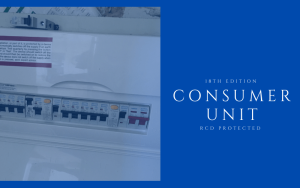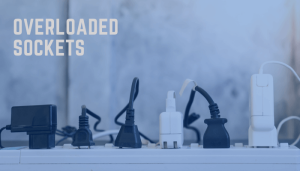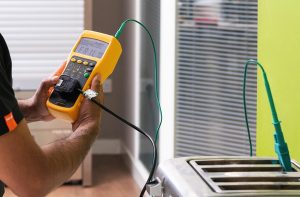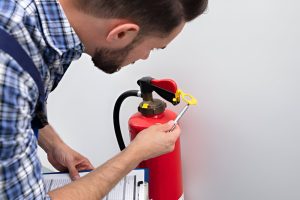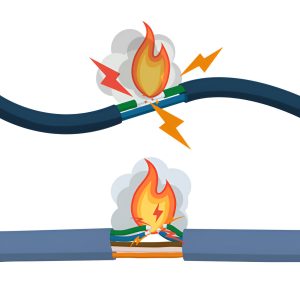Early in the 1960s, people started using fuse wires as protection against electrical overloads and heat. It was effective at that time, but there is another efficient tool these days. And this tool people refer to as MCB.
MCB refers to miniature circuit breakers. If you don’t have much knowledge about MCBs, this article will be your guide to learn everything you need to know.
Starting with the first question.
What does MCB mean?
An MCB or miniature circuit breaker is a safety device. It’s designed to protect electrical circuits from becoming overloaded by opening the circuit if there is a fault in the circuit. It is designed to protect electrical circuits from damage or injury caused by overload currents, short circuits, and other faults within the circuit. MCBs are available as single break devices with trip current ratings. These ratings range up to 30A for high-power switchboards and smaller units for lighter loads such as domestic lighting, and appliance circuits. MCBs usually have a test button to check whether they are living or not. Depending on the type of MCB, its purpose may be like that of a circuit breaker in the way. That it can protect against overcurrents and electrical faults. But, miniature circuit breakers differ from conventional circuit breakers in several ways The MCB can be replaced in most cases by an auxiliary contactor when determining the required overcurrent protection. It’s advised to hire a registered contractor if you want to replace one. A miniature circuit breaker is used to protect circuits from overcurrent and overload currents. Knowing this makes you wonder about what makes MCBs different from conventional circuit breakers? A miniature circuit breaker is compact about the size of a pack of cards. Designed to be installed in an enclosure using an integral fixing called the “housing”. The housing has terminals on each side that connect to wires coming from the two ends of the protected circuit. MCBs are available up to 30A. MCB has a trip unit or contact that interrupts the current flow in the event of an overload current, short circuit, or other faults within the circuit.How does an MCB work?
What is its role?
Simply, to work as a manual and off switch.What triggered the MCB?
It’s simple if your current electrical excess is somehow closer or more than your safety limits. The miniature circuit breaker will automatically be triggered. The miniature circuit breakers are only tripped when they receive an overcurrent caused by fault currents and overload current. Its electrical mechanism works differently. Meaning the interfering parts against overloading and short circuits are not the same. In case of overload, heat, and bend, your miniature circuit breaker will automatically be triggered and discharged.The role of MCB’s thermal overload protection
The primary role of miniature circuit breaker thermal overload protection is to interrupt the flow of current through a circuit when an abnormally high load is detected. This miniature circuit breaker protection is accomplished through a miniature bimetallic strip. The bimetallic strip resembles the heating element in an electric range. But, with one very important difference: miniature circuit breakers are designed to open or reset after tripping.The role of MCBs tripping coil short circuit protection
When a fault occurs, current flows in the faulted circuit that normally would flow through the tripping coil. That will cause the magnetic field in the core to collapse and cut off power to the circuit. Note: It is important to note that miniature circuit breakers work better with heavier loads. Also, miniature circuit breakers offer less resistance to electrical currents.Types of MCB
Generally, MCB has five different types, which are A, B, C, D, and Z, but your focus should be on only three as follow: Type B: Specially made for low voltage and domestic application which makes it sensitive to high voltages. The type B circuit breaker is designed for low-power electrical devices and usually trips from 3 to 5 times to have a full load. Type C: If you have a commercial or industrial property MCB type C is what you should consider. It’s the perfect fit for powerful devices. It usually trips from 5 up to 10 times to have a full load current. Type D: The MCB type D is two times better than type C, It trips up to 20 times to load the current. Customized for heavy electrical power, like heavy industrial and commercial buildings.MCB Selection
MCB selection processes are very important when choosing miniature circuit breakers. It is vital to know the various roles of miniature circuit breakers which include tripping, switching, or protecting. Your MCB should be designed for your specific requirements and meet all safety regulations and codes. There are several factors to consider during your miniature circuit breaker selection processes, you can’t just go randomly and buy one. Tripping characteristics, the breaking capacity, and the number of switches are the three essential factors of miniature circuit breaker selection. You need to be very careful in choosing miniature circuit breakers as they are smaller and more sensitive than standard ones.Difference between MCBs and RCDs
Before we identify the difference between MCBs and RCDs, we need first to identify what is RCD. RCD is a residual current device designed for providing protection from electric shocks and injury. Its prime role is to detect any signs of current unbalance, if that happens the power will shut down automatically. Therefore RCDs are life-saving devices. Compared to MCBs, RCDs are much better when it comes to personal protection levels. As you have seen, MCBs work the job of a manual switch, but only in the event of overload and short circuits. So the difference is MCBs role is to protect the circuit, whereas RCDs has a more important role which is to protect lives.FAQs
Will miniature circuit breakers work for my home?
The miniature circuit breaker works great in homes that experience occasional overloads and short circuits, but it does not work well with heavy-duty power devices like large heaters.
Why are MCBs Preferred to Fuses?
MCBs and fuses have the same function, but MCBs are more efficient especially for high electrical needs.
Can I mix MCBs?
Theoretically yes you can, but it's advised not to do, due to complex installation processes.
What is the current rating for an MCB?
Based on the regulation, MCBs has a fixed current rating in a range of 1A-100A
What is the difference between MCB and MCCB?
MCBs stand for miniature circuit breaker and MCCB stands for Molded case circuit breaker.



